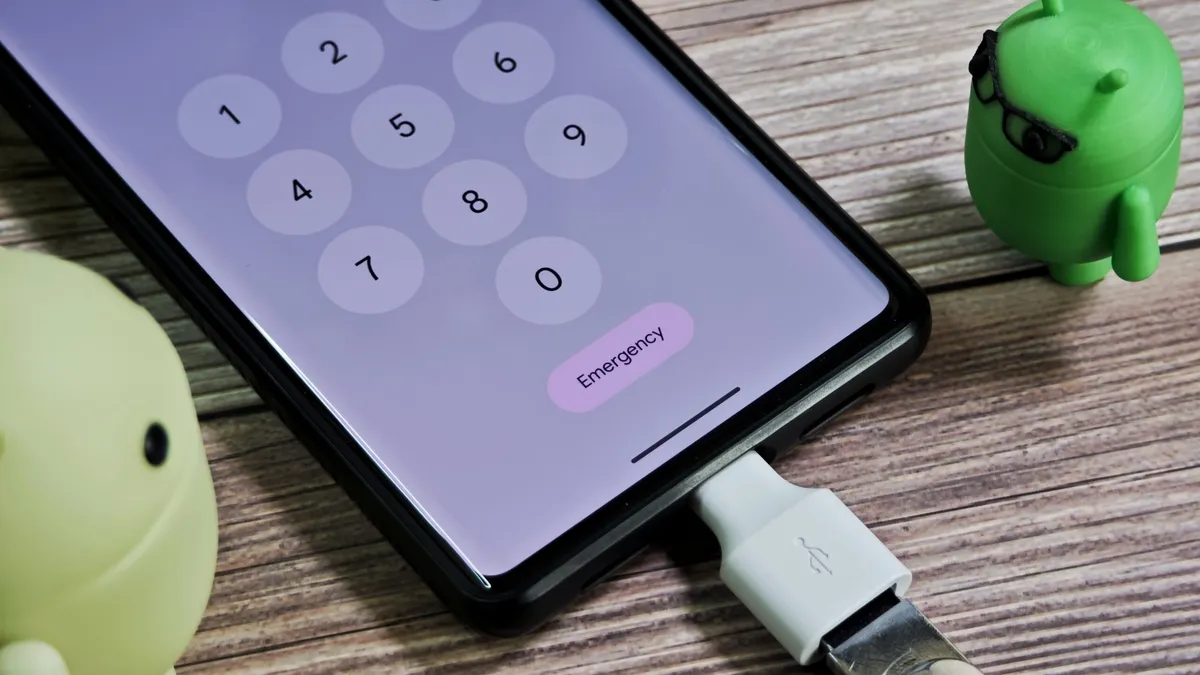
In a bid to bolster device security, Google is introducing an optional feature in Android 16 that disables USB data access when a phone is locked. This new functionality aims to protect users from potential threats, including data extraction and lock screen bypassing, particularly in cases of lost or confiscated devices. This feature is aligned with the new Advanced Protection Mode, which blocks the use of new USB peripherals until the device is unlocked and the USB is reinserted.
For those serious about security, it’s imperative to avoid inserting unverified USB devices into personal gadgets. The risks associated with unknown USB drives are significant; they may harbor malicious payloads capable of compromising device integrity. In scenarios where an Android device is lost or taken, controlling USB access becomes even more critical. With this upcoming feature, users can prevent unauthorized access to sensitive data by disabling USB connections when the phone is locked.
While it may seem excessive, there are legitimate concerns prompting the need to restrict USB access on locked Android devices. Individuals such as journalists or activists, who are often at risk of being targeted by malicious actors, must consider every precaution to safeguard their devices. USB peripherals, including keyboards, can be exploited to brute-force the keyguard, while other devices might inject harmful payloads that exploit system vulnerabilities. A recent incident reported by Amnesty International highlighted a zero-day USB driver exploit used to breach a student activist's phone in Serbia, underscoring the necessity of this protective measure.
The most effective method to thwart such attacks is by disabling USB data signaling, which prevents USB devices from sending data to locked Android devices. This can be accomplished through hardware or software controls. A hardware-level approach completely shuts off the USB data lines, allowing for charging but blocking all peripherals, including keyboards and flash drives. In contrast, a software-level method restricts high-level USB support, disallowing connections from new peripherals while the device remains locked.
With the launch of Android 12 in 2021, Google introduced an API for disabling USB data signaling at the software level, initially available to device admin apps for managing enterprise devices. This feature gained broader applicability with the release of Android 15, which enhanced lockdown mode to include USB data access restrictions. Now, in Android 16, Google is looking to implement this API to disable USB data access while the device is locked, contingent upon the user enabling Advanced Protection Mode.
Advanced Protection Mode is a new feature in Android 16 that enhances security for users who choose to opt-in. It builds upon Google’s Advanced Protection Program, which offers additional safeguards against unauthorized access to Google accounts. When activated, this mode restricts apps from obtaining sideloading permissions, disables 2G access, enables MTE for compatible applications, and blocks WEP connections. Furthermore, apps can access the Advanced Protection Mode API to enable their own security features when users opt in.
Recent APK teardown insights indicate that popular apps, such as Phone by Google and Messages, are preparing to support this new mode. The findings suggest that when Advanced Protection Mode is enabled, USB data signaling will be disabled while Android is locked. Users will receive notifications warning them of “suspicious USB activity” if a new device is connected, necessitating an unlock before the USB device can be used.
While Google has yet to publicly roll out a user-friendly method to enable Advanced Protection Mode, preliminary tests in Android 16 Beta 4 have shown promising results. Users can achieve the new USB data protection by manually enabling this feature, successfully preventing unauthorized access to peripherals when the device is locked. This simple yet effective security enhancement could play a vital role in preventing security breaches, like those documented by Amnesty International, ensuring that sensitive data remains protected even in compromising situations.
As we await Google’s official rollout of this feature, security-conscious users are encouraged to stay informed about future updates and enhancements in Android 16's security capabilities. For more exclusive reports, app teardowns, and in-depth tech coverage, keep an eye on Authority Insights.